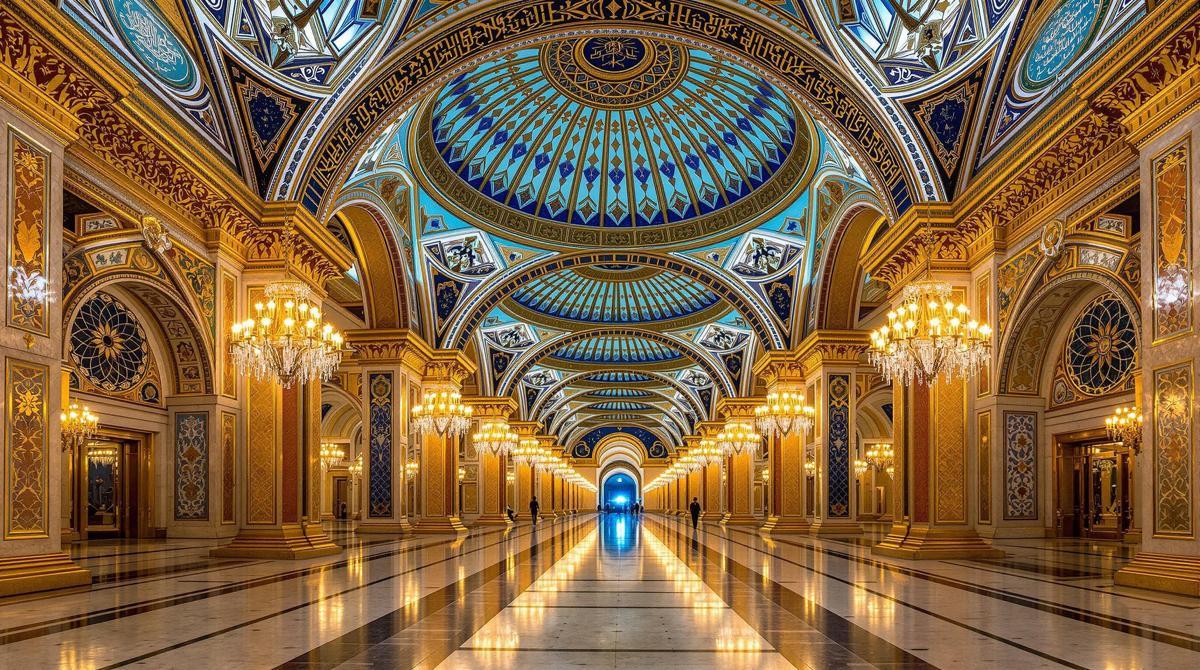Uzbekistan’s dazzling capital, Tashkent, stands as one of Central Asia’s most fascinating yet overlooked metropolises. This 2,200-year-old city has reinvented itself countless times through conquests, earthquakes, and political transformations. Today’s Tashkent offers visitors an intriguing fusion of gleaming modern architecture, Soviet-era monuments, and timeless Islamic masterpieces that few Western travelers ever experience.
The surprising subway museum beneath your feet
Tashkent’s metro system isn’t just transportation—it’s an underground art gallery. Each station showcases unique themes through ornate chandeliers, mosaics, and marble work that would make palaces jealous. Photography restrictions were only lifted in 2018, making this hidden treasure newly accessible to visitors.
“Our metro stations tell Uzbekistan’s story through art—from cosmic achievements at Kosmonavtlar to literary heroes at Alisher Navoi. It’s a museum where people actually live their daily lives,” explains Davron Fayziev, local historian and tour guide.
The ancient Quran that survived Genghis Khan
In the serene Khast Imam complex lies a historical marvel: the Uthman Quran, believed to be one of the world’s oldest Quran manuscripts. Dating from the 7th century and stained with the blood of its namesake caliph, this sacred text survived Mongol invasions and Soviet repression to become Tashkent’s most treasured artifact.
Chorsu Bazaar: The 2,000-year-old shopping experience
Under the distinctive blue dome of Chorsu Bazaar, Tashkent’s oldest marketplace has buzzed with activity since ancient Silk Road days. The sensory feast includes mountains of vibrant spices, freshly baked non bread, and the distinctive aroma of kumis (fermented mare’s milk) that has tantalized travelers for millennia.
Local vendors hawk everything from handcrafted silk carpets to modern electronics in a chaotic symphony of commerce that hasn’t fundamentally changed since caravans first stopped here en route to China.
Where Soviet brutalism meets Islamic grandeur
Tashkent’s architecture tells its complex story. The massive 1966 earthquake destroyed much of the historic city, leading to Soviet reconstruction with wide boulevards and imposing concrete buildings. Yet scattered throughout are stunning Islamic masterpieces like the 16th-century Kukeldash Madrasah with its intricate geometric patterns.
This architectural contrast is most striking at Independence Square, where Soviet monuments have been replaced with new Uzbek symbols of national pride and identity.
The plov ritual: Uzbekistan’s soul in a single dish
No visit to Tashkent is complete without experiencing the ceremonial preparation of plov (pilaf), Uzbekistan’s national dish. This fragrant mountain of rice, carrots, chickpeas, and lamb represents centuries of culinary tradition and social bonding. Like Mediterranean cultures with their iconic dishes, plov in Uzbekistan transcends mere food to become cultural identity.
“For Uzbeks, plov is our history, our hospitality, our celebration of life’s milestones—all in one pot,” says Malika Umarova, culinary instructor at Tashkent’s Central Asian Plov Center.
The gateway to the Silk Road
Tashkent serves as the perfect launching point for exploring Uzbekistan’s legendary Silk Road cities. High-speed trains now connect to Samarkand (2 hours) and Bukhara (4 hours), making the country’s UNESCO treasures easily accessible for travelers. With Uzbekistan’s new digital nomad visa options, extended stays to explore these treasures have become remarkably simple.
A city reborn through craftsmanship
Traditional artisans are experiencing a renaissance in Tashkent’s craft workshops. The intricate suzani embroidery, blue-glazed ceramics, and hand-carved wooden doors represent generations of skill passed through families. The Applied Arts Museum houses magnificent examples, while like hidden chambers in European castles, many of Tashkent’s finest workshops lurk in residential courtyards tourists rarely discover.
Beyond the usual tourist trail
Tashkent offers adventures that rival even the remote deserts of Africa. The nearby Chimgan Mountains provide hiking, skiing, and stunning alpine scenery just 90 minutes from downtown. Closer in, the peaceful Botanic Garden offers respite from urban energy with its 6,000 plant species across 66 hectares.
For history buffs, the darkly fascinating Museum of Victims of Political Repression documents Stalin’s brutal purges that killed millions across Central Asia, reminiscent of dark histories hidden in other beautiful lands.
Tashkent represents Central Asia’s most accessible introduction—a city where ancient traditions flourish alongside ambitious modernization, all without the overtourism afflicting other Silk Road destinations. Its unique position at the crossroads of cultures makes it not just a destination, but a revelation.
